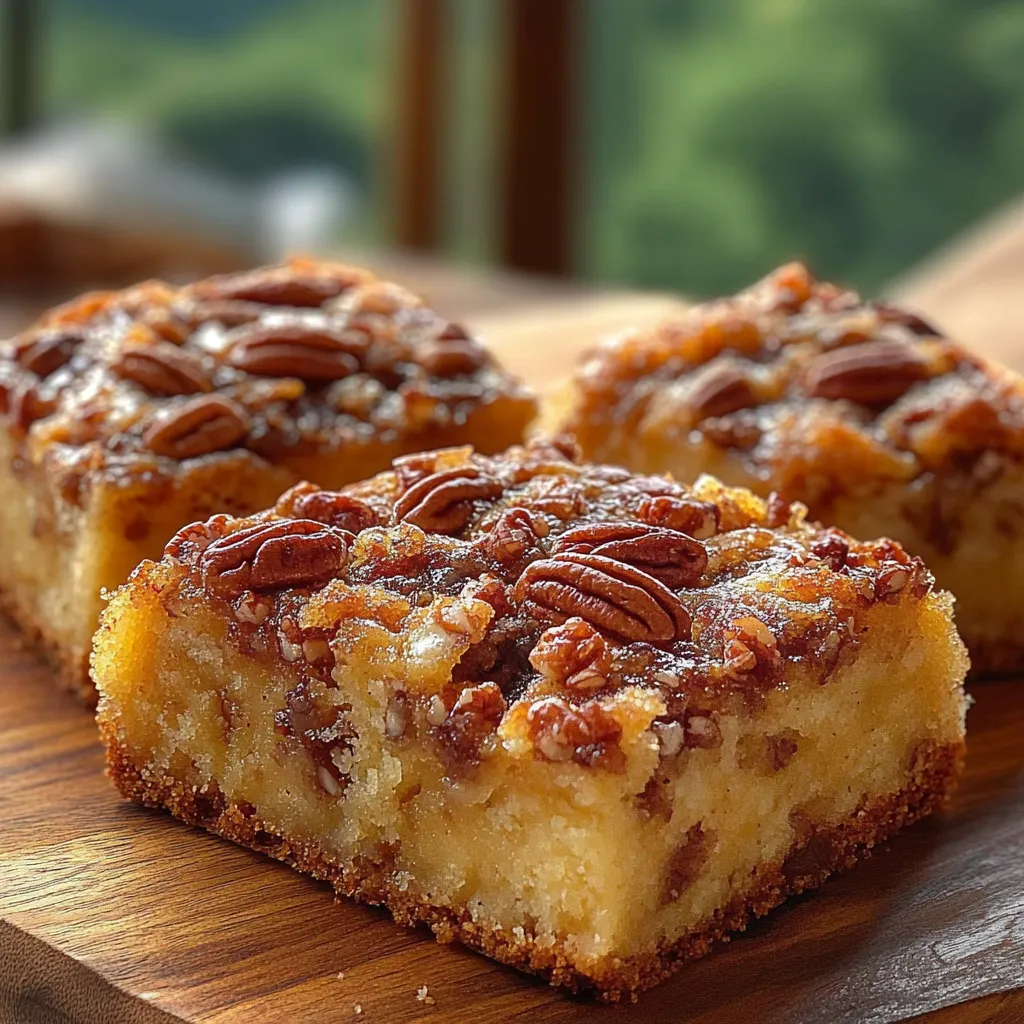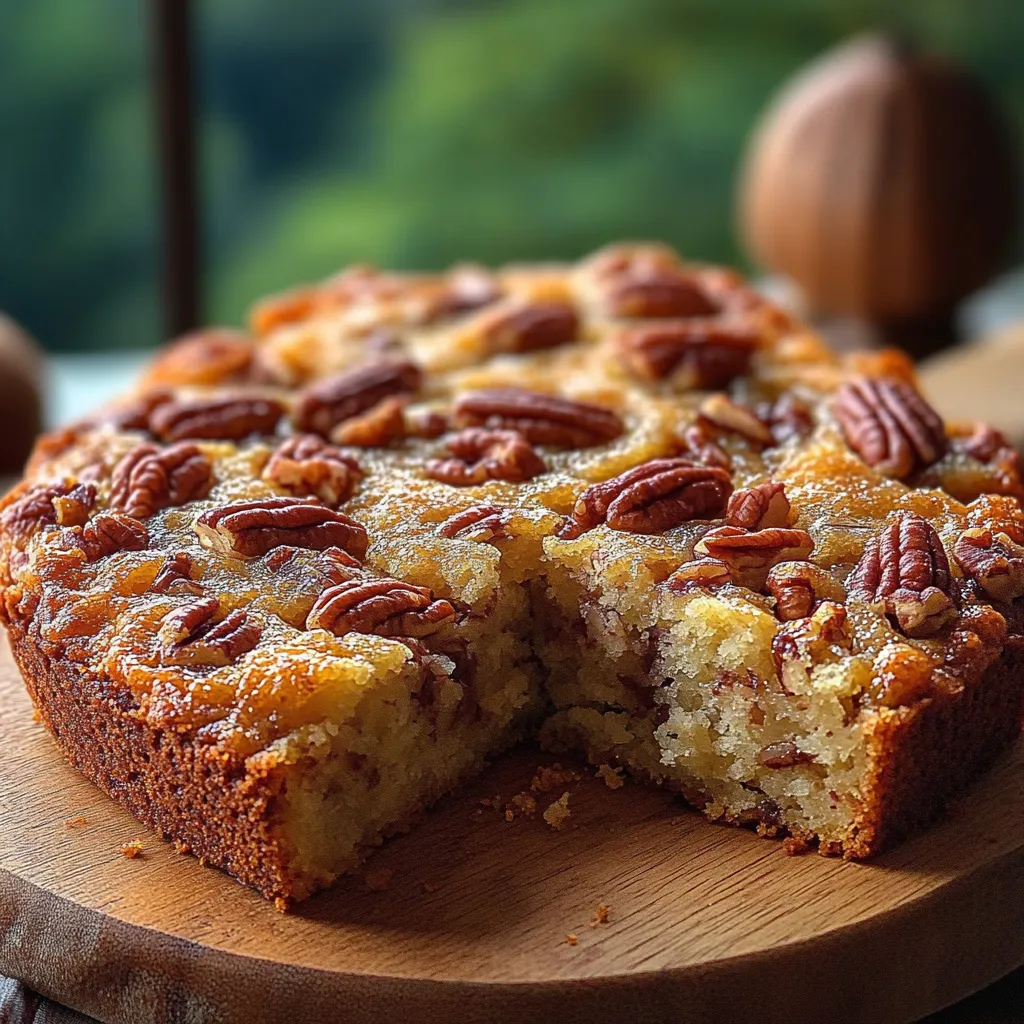 Pin
Pin
This sweet Alabama pecan bread brings together two Southern favorites—pecans and honey—for a rich, moist treat that's perfect as a dessert or afternoon snack with coffee. The combination of brown sugar and honey creates a depth of sweetness that lets the nutty flavor of the pecans shine through in every bite.
I first made this bread for a family reunion in Alabama, and my grandmother actually asked me for the recipe afterward. That's when I knew this one was special enough to keep in regular rotation.
Ingredients
- Pecans: Two cups finely chopped pecans which add essential texture and nutty flavor to every bite. Look for fresh pecans with no bitterness when tasted raw
- Self rising flour: One and a half cups self rising flour saves you time by having leavening agents already mixed in. Check the expiration date for best results
- Granulated sugar: One cup granulated sugar provides classic sweetness and helps create that perfect crust
- Brown sugar: One cup brown sugar adds moisture and a caramel undertone that enhances the pecan flavor
- Vegetable oil: One cup vegetable oil ensures the bread stays moist for days after baking
- Eggs: Four large eggs beaten which bind everything together while adding richness
- Vanilla extract: One teaspoon vanilla extract brings warmth and aromatic sweetness. Pure extract makes a noticeable difference
- Salt: Quarter teaspoon salt balances the sweetness and enhances all other flavors
- Honey: Quarter cup honey adds distinctive floral sweetness and helps keep the bread moist longer
- Melted butter: Two tablespoons melted butter enriches the flavor and contributes to the tender crumb
Step-by-Step Instructions
- Prepare Your Environment:
- Preheat your oven to exactly 350°F and thoroughly grease your 9x13 baking dish. I find that a light coating of butter followed by a dusting of flour gives the best release for this recipe. Make sure your ingredients are at room temperature for the most even mixing.
- Create The Base Mixture:
- Combine both sugars with the beaten eggs and vegetable oil in a large bowl. Mix until the mixture becomes slightly lighter in color and the sugars begin to dissolve into the wet ingredients. This creates the foundation for your bread's texture.
- Incorporate The Dry Ingredients:
- Add the self rising flour and salt gradually using a folding motion rather than aggressive stirring. Mix until just incorporated with no dry spots but be careful not to overmix as this can make your bread tough. The batter should be relatively thick but pourable.
- Add The Flavor Enhancers:
- Gently stir in the vanilla extract honey and melted butter until fully incorporated. These ingredients add complexity to the flavor profile and ensure moistness. The honey particularly helps to preserve freshness over several days.
- Fold In The Pecans:
- Add your chopped pecans and fold them in with a gentle hand using a spatula or wooden spoon. Make sure they're evenly distributed throughout the batter to ensure every slice has plenty of nutty goodness.
- Bake To Perfection:
- Pour the batter into your prepared dish smoothing it evenly to the corners. Bake for 30 to 35 minutes watching carefully near the end. The bread is done when the edges pull slightly from the pan and a toothpick inserted comes out with a few moist crumbs but no wet batter.
- Allow Proper Cooling:
- Let the bread rest in the pan for at least 15 minutes. This crucial step allows the structure to set and flavors to meld. Cutting too soon will result in a crumbly texture and lost moisture.

My grandmother always said the secret to perfect pecan bread is using pecans harvested that same season. There's something magical about freshly harvested pecans that brings an intensity of flavor you just can't get with older nuts. The first time I made this with fresh-from-the-tree pecans, the difference was immediately noticeable.
The Perfect Texture Guide
Creating the ideal texture for pecan bread requires attention to a few key details. First, measure your flour by spooning it into measuring cups rather than scooping directly from the bag, which compacts it. Second, don't rush the mixing process when combining wet and dry ingredients but also be careful not to overmix. Lastly, the toothpick test can be deceptive with this bread—look for moist crumbs rather than a completely clean toothpick, as this ensures the bread won't be dry.
Making It Your Own
This versatile bread welcomes thoughtful adaptations. Try adding a teaspoon of cinnamon or a quarter teaspoon of nutmeg for a warm spice profile. For a more decadent version, fold in half a cup of chocolate chips along with the pecans. Some bakers in my family even add two tablespoons of bourbon to the wet ingredients for a sophisticated flavor that pairs beautifully with the pecans and honey.
Southern Pecan Traditions
In the American South, pecans hold cultural significance beyond simple ingredients. Many families have pecan trees passed down through generations, with annual harvesting becoming cherished traditions. This bread honors that heritage while offering the distinctive sweetness that defines Southern baking. Historically, honey was used as a preservative in breads before modern refrigeration, which explains why honey-sweetened breads like this one maintain moisture and freshness longer than those made with sugar alone.
Common Questions About This Recipe
- → What type of pecans work best?
Fresh, raw pecans are ideal—chop them finely and toast lightly for deeper flavor before baking.
- → Can you substitute another sweetener for honey?
Maple syrup or agave syrup can replace honey, though flavor will subtly change.
- → What's the best way to serve?
Enjoy warm slices plain or with a drizzle of honey butter for added richness and sweetness.
- → How do I store leftovers?
Keep in an airtight container at room temperature for up to three days to maintain freshness.
- → Can I freeze the bread?
Yes, wrap individual slices in plastic and freeze up to two months. Thaw and warm before serving.
- → Is self-rising flour necessary?
Self-rising flour helps provide lift, but you may make your own by adding baking powder and salt to all-purpose flour.
